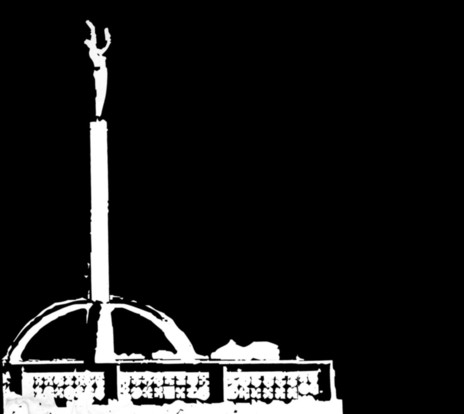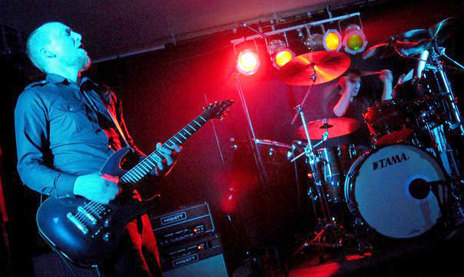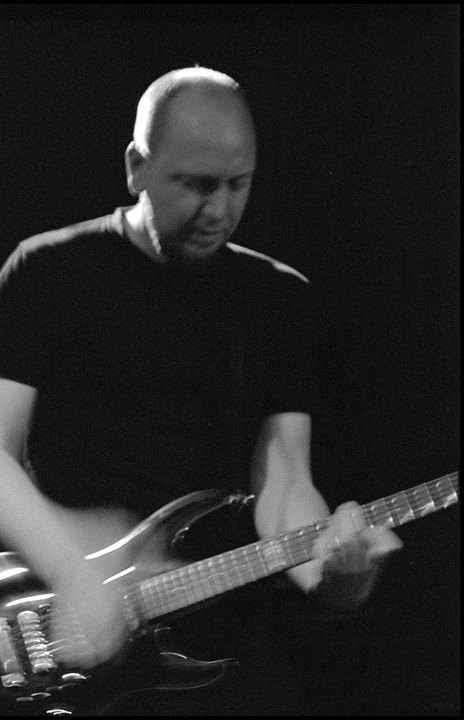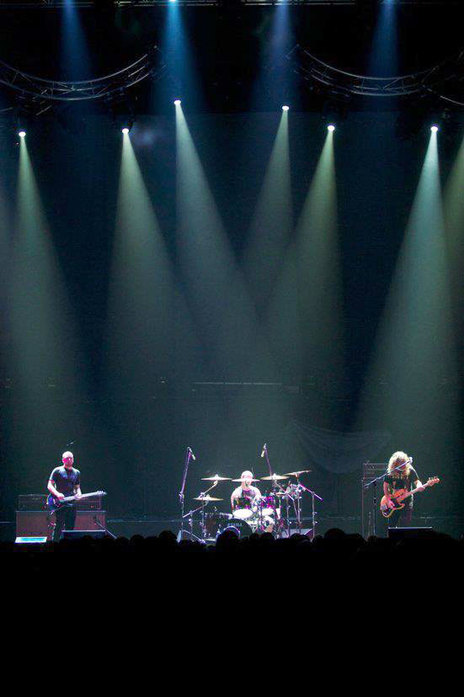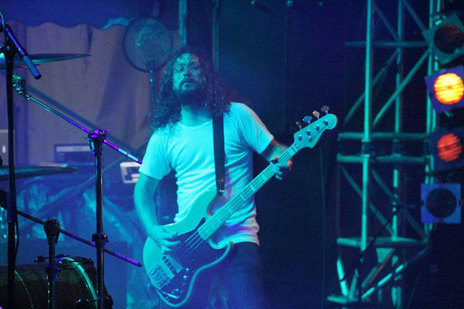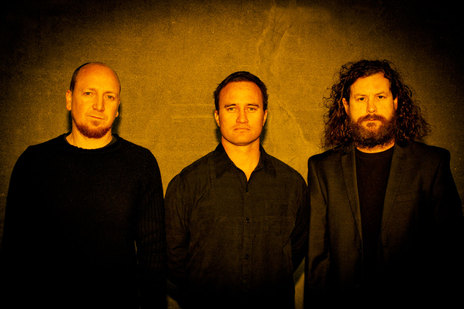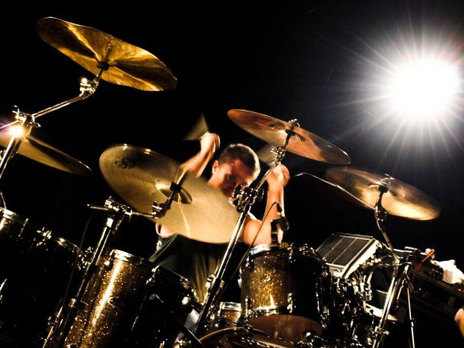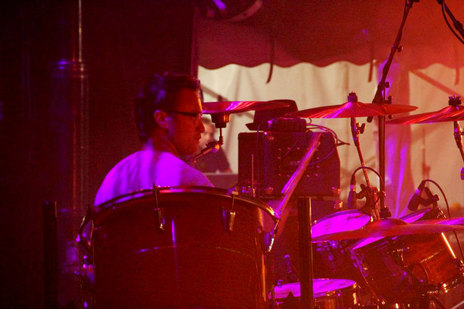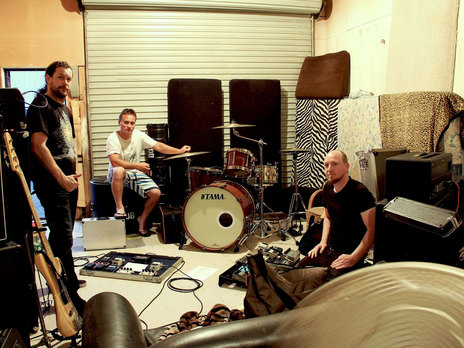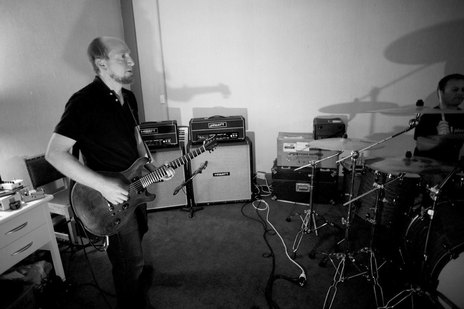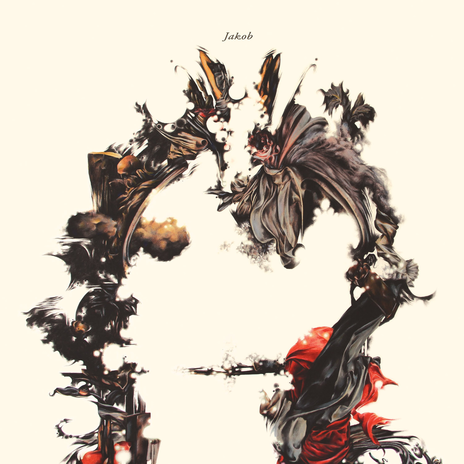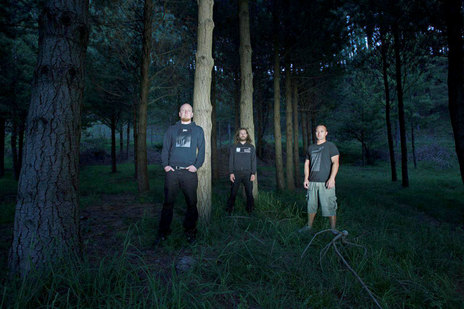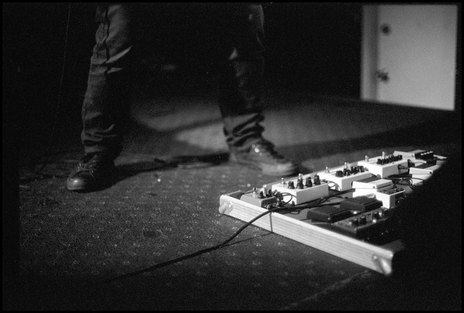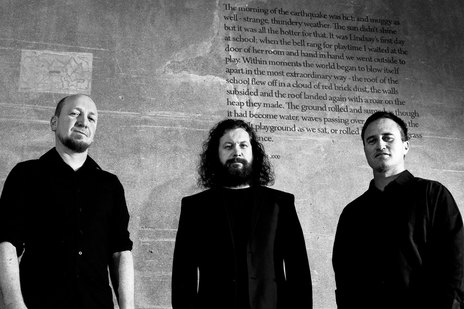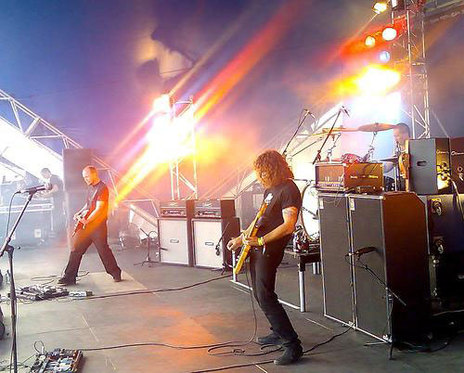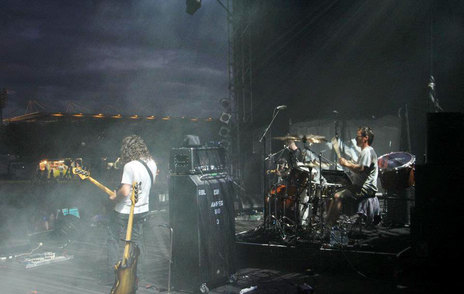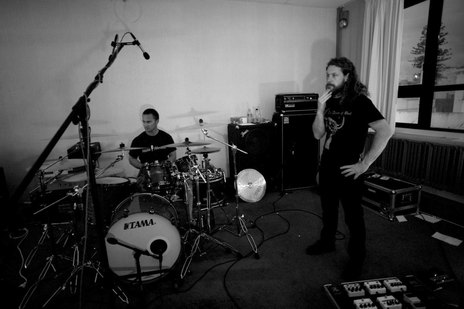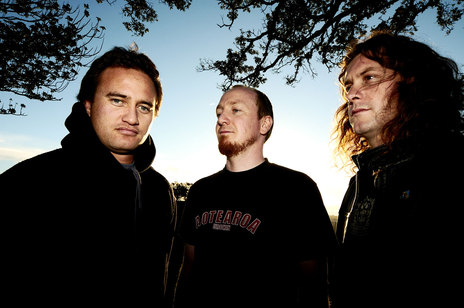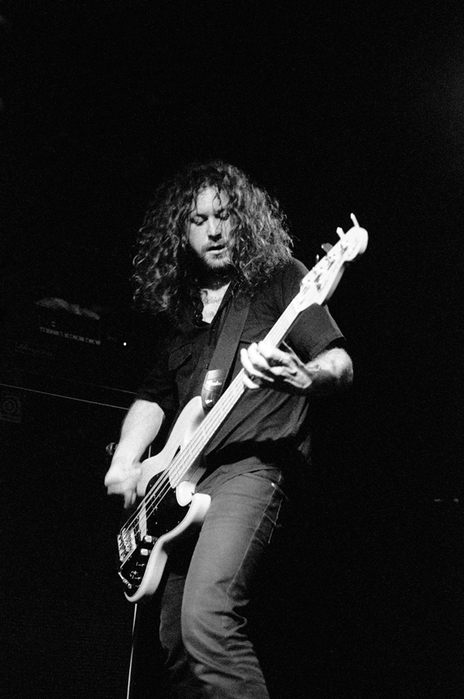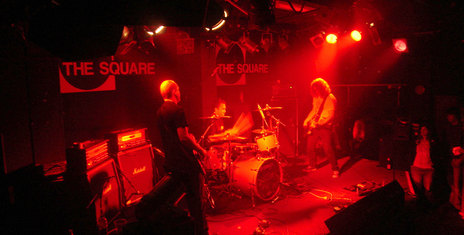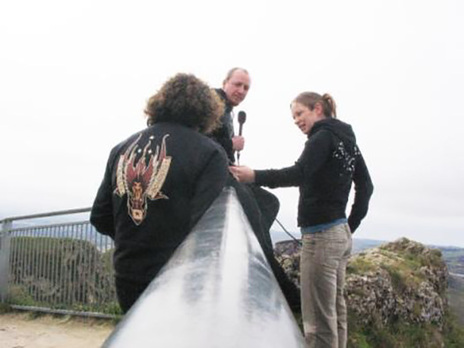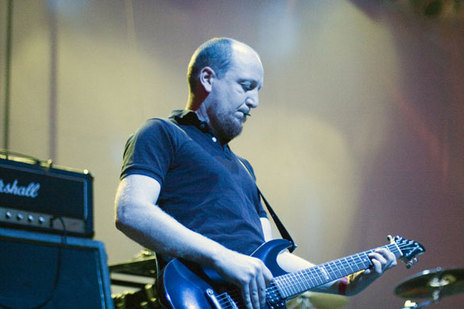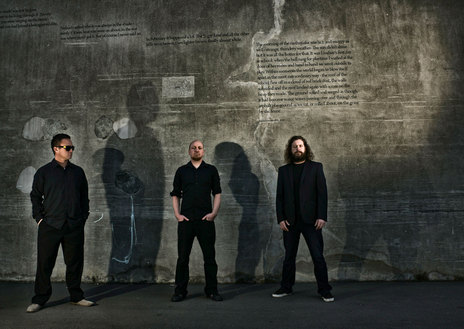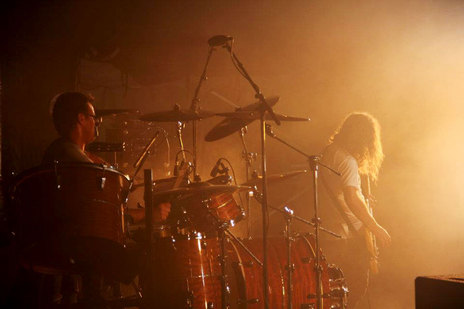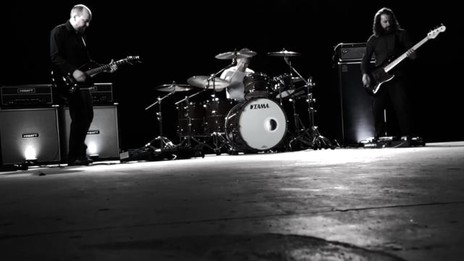Jeff Boyle, Jason Johnston and Maurice Beckett met as teenagers, hanging out at the local skate park, bonding over the music of Godflesh.
Boyle and Johnston honed their craft on Tool and Helmet covers, getting pub gigs while Still underage.
Boyle and Johnston honed their craft playing Tool and Helmet covers, getting gigs in pubs they were too young to be in. “We were perfectionists, right from the start. We’d practise eight hours a day, every Saturday and Sunday, at Jason Johnston’s high school music suite.”
Their band Vaccine went through eight singers, but there were no Maynards among them. Maurice Beckett was the last to try out, before Jeff Boyle moved to Auckland. There he shifted his attention to making electronic music, writing a few trip-hop numbers with Sandy Mill.
And then, in 1997, Boyle went to see Bailterspace play. “They re-inspired me … showed that there were other ways to use guitar than the old rock riffing. So I moved back to Napier, said to Jason and Maurice right – let’s do this.” Using the electronic sketches Jeff had been working on, the trio layered guitar, bass and drums, resulting in a demo of four instrumental songs.
A couple of months later Maurice Beckett went to Sweden, catching a set at Roskilde Festival by Scottish post-rock band Mogwai. He returned with a copy of their album Ten Rapid – as Jeff Boyle recalls – “buzzing, saying, ‘Bro there’s this band that’s doing the same shit as we’re doing.’”
It was in these first few months of playing together that the band met their two closest collaborators – David Holmes, an 18-year-old who had inherited a studio and business when his father had passed away, and Ed Davis, who worked there as a videographer. Holmes recorded Jakob’s first EP, learning his way around the gear as he went. Student radio picked up on it, and it was nominated for four BNet awards in 1999.
Jeff Boyle says, of finding their sound, “I started off with one delay pedal, and then we were jamming in Jason’s dad’s shed. He’d moved to Australia, and left all this gear, he used to be in this funky reggae band. And there was this one pedal, an Ibanez AFL, an auto-filter. So I tried it out, I put it next to the one I had, played a chord, and it went Chwow … wowowowowowowow … and we just looked at each other, and they went ‘do that again’ … and that became ‘Gattaca’, that’s all it was. That’s become our sound, it was so accidental.”
They returned to David Holmes’s studio to record their debut LP, 2001’s Subsets Of Sets. The video for ‘Nice Day For An Earthquake’ gained them nationwide airplay on MTV. Made by Ed Davis, the treatment was stunning in its simplicity. Jeff Boyle remembers, “Jason and I were working on some demos, on a Sunday afternoon, and I got a call from Ed, he said right, I’m coming to pick you up, I’ve got an idea for a video. He’d just got a Steadicam and wanted to try it out. He’d used this old TV for a video for Paul McLaney’s video ‘Permanence’, and had it in the back of the truck when he picked us up. We stopped at The Warehouse, bought an axe, a chair and a tarpaulin, and we were like, ‘Dude what are we up to here? Are we going to get in trouble for this?’ So we got to Te Mata Peak, lugged this heavy old TV up the hill – and Ed said, ‘You go and hide behind that pylon, Jason you just sit there – I’ll put the axe next to you, and when I say go, you just start smashing up that TV.’”
Jakob played a lot of gigs following the release of Subsets, and suffered a bit of burnout. “From time to time you just get sick of each other’s faces, and need a break. And it does the world of good.” They all had a rough patch in their personal lives, and when they returned to the studio, it was a cathartic outpouring.
Jakob started to tour the world off the back of the 2003 album ‘Cale:Drew’the UK and Europe.
Named for the twins that Jeff Boyle’s sister came close to losing, and dedicated to Maurice Beckett’s mother, Faye, who had died that year, Cale:Drew was heavier and darker than Subsets Of Sets. It was released in 2003, and again, garnered BNet play and award nominations. Jakob started to tour internationally off the back of the album, playing shows in Australia, at SXSW in Texas, in Chicago, and then over to the UK and Europe.
“We did a festival called Forma Nova in Denmark. We were one of the headliners, sandwiched between Efterklang, an amazing band who were totally phenomenal that night, and Amiina, Sigur Ros’s string quartet. So that was huge, we realised where the bar was set, where we had to be. Big learning curve, but we footed it. The next night we played London, with this metal band. It was amazing, because both crowds went apeshit.”
Tom Dalton was tour managing Jakob at the time. He’d been working with The Datsuns, who were a big deal in the UK music industry by 2004. Jeff Boyle says there was a great reception for NZ bands in London at that time, and the band returned to Napier feeling that that they could make a name for themselves internationally.
Jakob’s third LP, Solace, was released in 2006. Boyle recalls, “I didn’t like that record much, struggled to listen to it for the first three months. It wasn’t until we went for a ride in Jason’s boss’ $120,000 Audi, and we had it on the stereo, that I thought it was any good.”
Where they’d previously gone into the studio with almost fully formed songs, Solace was constructed in the studio, piece by piece. Scott Kara of NZ Herald wrote of the album: “Within the space of a song they can move from brittle and shimmering beauty into big, lush waves of noise, flecked with distortion, and unexpected climatic crescendos.”
Again, they hit the road, touring with Cog and Kora in Australia, and with fellow post-rock band Isis around Europe. That tour further strengthened their fan base, and confidence, and they were offered a record deal and a booking agency.
It was around this time that Jeff Boyle’s wrist started to cause him pain. “At the time I just thought it was from guitar playing, because my technique uses a lot of volume swelling … I got that from Mark Knopfler. Big Dire Straits fan when I was a kid, but he does it subtly and sporadically and I took it and ran. So when my wrist started to hurt, I just thought it was over-use.” It turned out to be an elongated ulna bone, which kept growing, tearing tendons on the way. For the year following surgery, Boyle couldn’t play at all. When he finally got to the stage that he could play a full show again, Jakob booked a nationwide tour. And then Maurice Beckett broke his hand.
on the ‘SOLACE’ tour they met their heroes, Tool, in the UNited states.
The tour was re-scheduled, and well attended. They headed over to the US again, with their post-rock buddies Isis. It was on that tour they met their heroes, Tool. “We played a sold out show at The Troubadour in LA, and about ten minutes before we played we were in the green room and Adam Jones, from Tool, comes up to us. I’ll never forget it, especially given our beginnings. My heart leapt out of my chest, I’d idolised that guy since I was 16.” Jones had come specifically to see Jakob play and offer them a support slot for a US tour, but their visas and return flights wouldn’t allow them to stay on. Tool did enlist Jakob in for support slots when the band came to Australasia in both 2011 and 2013.
Jakob began demos for a new album in 2010. Their producer David Holmes had moved to England, so they hired Jono Gardner, whom they’d met through Isis, and booked nine days at Roundhead Studios in Auckland. “We self–funded, sunk all our money into it,” says Boyle. “It just didn’t happen how we wanted it to. Both my amps broke down, so they were out for a day getting repaired. My main delay pedal stopped working, so we had to use a rack-mount from the studio – and that didn’t cut it. Some of the songs that we thought we could build in the studio just didn’t go anywhere. But this is our first time in a big studio and it’s really expensive, and you’ve got that on your shoulders, and it tightens them up a bit. It becomes forced creativity.”
Jeff Boyle travelled to Los Angeles to start mixing the album, but quickly realised it wasn’t the album he wanted to make. “We’d built up momentum, and then lost it, and then this was our chance to build it up again – it needed to be really good.” Working with Nick Blow from Napier studio Sister Lung Productions, the band tried overdubbing the Roundhead sessions, but eventually decided to scrap the lot and start again. Boyle says: “So early December [2011] we mic’d the kit up, spent two days setting up the studio ready to go. The night before we started recording, Jason was making dinner for his family. Cutting a pumpkin with a big knife. He sliced his hand straight open, sliced his tendons. He was out for six months.”
And so the band forgot about making an album for a while. In 2013 Jakob revisited the Roundhead recordings. David Holmes came in and helped Jeff Boyle finish the mix, and Jeff says he’s finally happy for you to hear them.
Jakob's album Sines was released in October, 2014. In April 2015 it was awarded The 2015 Taite Music Prize.
